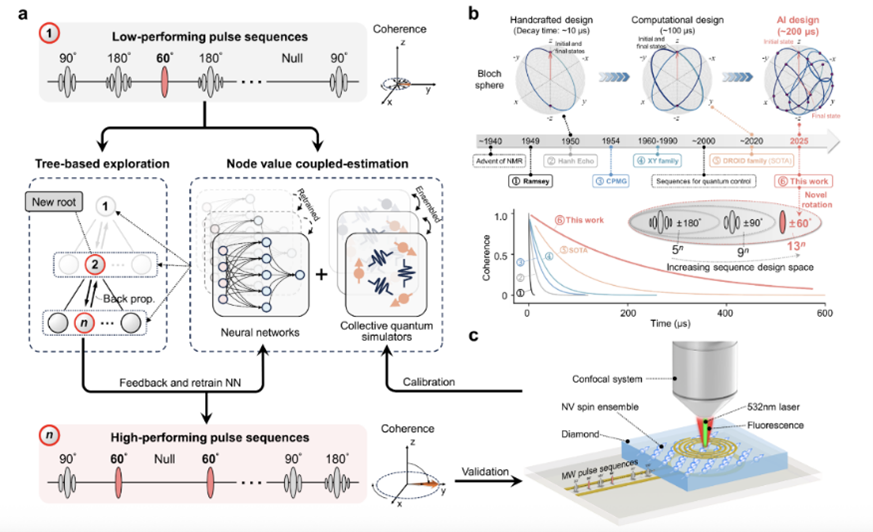Citation: Zhang, J. et al. (2025). Learning to steer quantum many-body dynamics with tree optimization. arXiv. https://doi.org/10.48550/arXiv.2510.07802
Authors: Zhang J., et al.
Publication location: arXiv (identifier arXiv:2510.07802)
Date: 9 October 2025
DOI: https://doi.org/10.48550/arXiv.2510.07802
Abstract:
High-quality control over complex quantum systems is a key to achieving practical quantum technologies. However, progress is hindered by the exponential growth of quantum state spaces and the challenges posed by realistic experimental conditions. Here, we present an AI framework that learns to design pulse sequences for optimized quantum control over many-body spin systems, providing a powerful alternative to theory-driven methods. The framework combines customized tree search, neural network filtering, and numerical simulation guidance to navigate highly nonlinear optimization landscapes, using only desktop-level computational resources and minimal experimental input. The objective function is set to preserve coherence, a key prerequisite for quantum information processing. Our framework identifies over 900 high-performing sequences that exhibit non-intuitive structures and hence challenge long-standing design principles, while established optimization methods struggle to find such solutions. Experiments in a diamond spin ensemble show that the best AI-designed sequences achieve coherence times exceeding 200 microseconds, representing a 100% improvement over state-of-the-art baselines and approaching the temperature-imposed limit. Beyond spin coherence preservation, our framework is readily extendable through modified objective functions and incorporation of appropriate training data. This work highlights AI’s potential to steer complex quantum many-body dynamics, marking a paradigm shift toward data-driven sequence design with broad applicability across spin-based quantum technologies and beyond.

